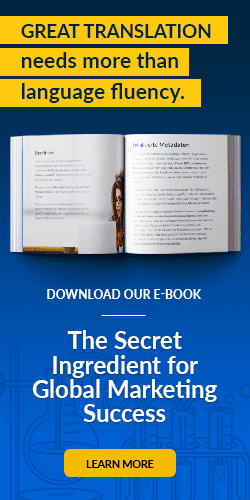Translation is often an invisible art. At its best, consumers never know they’re experiencing translated or localized content.
But delivering such authentic and resonant results is challenging. Global customers demand content that’s as confident, artful and alluring as a domestic user would find on a brand’s flagship site.
Achieving this quality demands a balance of passion and practicality—combining an unparalleled respect for a brand’s voice and offerings with a deep understanding of culture and customer preferences.
Done right, this approach not only yields more engaging content. It also boosts web traffic, conversions, and revenue.
When Translation Transcends Words
Great translations create customer experiences that are textured by fluency, nuance, and creativity—vital elements when replicating a brand’s persona in the global online marketplace.
Such “brand-perfect” translations require time and skill to achieve. In reality, linguists don’t really see words as they translate. Instead, they’re working with ideas and concepts that must be transferred into another paradigm—a language with its own rhythm, rules, and resources.
Great translations create brand experiences that are textured by fluency, nuance, and creativity.
Great Translation Means ‘Tone’
Crafting exceptional translations demands a fluency in other linguistic nuances, such as tone and formality. We’ve seen this time and again, often with our own customers.
Take the case of a leading quick-service restaurant chain that localized its English-language website to better serve U.S. Hispanic customers. Its Spanish-language website initially had translations with a “formal” Spanish tone—a stark contrast to the playful, family-centric voice used on its English site.
The site was underperforming. The restaurant chain didn’t understand why.
We recommended changing the translations’ tone from formal to informal, to match the brand’s fun-loving personality seen on its English site. The company agreed.
Crafting exceptional translations demands a fluency in other linguistic nuances, such as tone and formality.
This tonal shift made all the difference between alienating an audience and forming a relationship with them. Three months later, the effects of the change were clear: the Spanish site’s bounce rate had dropped, and customer time spent on-site had grown. Page views and conversion rates increased, too. This experience illustrates two important ideas. First, it drives home the lesson that, when appropriate, translated content should be crafted to reach audiences on a personal level. Second, it highlights the importance of cultural relevancies and preferences.
Great Translation Means ‘Native-Friendly’
With another customer—one that served the South Korean market with a localized website—we noticed that its customer promotions were underperforming. We discovered the company’s homepage “hero” promotions, while linguistically accurate, lacked the verve customers expected. In other words, they felt like translations—not like natively-crafted Korean content.
Here’s why: While Western consumers prefer a high-level, “more sizzle, less steak” feel to branded promotional content, Korean consumers expect more detailed descriptions of a brand’s offerings. Using this nuanced understanding of Korean language and culture, we were able to craft messaging that might appear verbose to English speakers, but hit the sweet spot for Koreans.
Providing accurate, authentic translations delivers a natural and memorable experience for global customers.
The change in performance was immediate. “Hero” promotion click-throughs increased on average by 15%, and checkouts increased on average by 44%. And when we provided more information on high-interest products, the site experienced a 30% jump in clicks and a 69% increase in checkouts.
Thanks to our ability to provide accurate, authentic translations, we created a natural and memorable experience for these Korean customers.
Conclusion
The difference between good translations and great “brand-perfect” translations can be affected by cost, quality, speed and skill. But the most important factor often hails from within translators themselves.
Just as in any profession, passion is the key differentiator between mediocrity and excellence. Since language is as dynamic as the human mind, there often isn’t “one single way” to say something. These nuances are worth discussing, and exploring.
This is where MotionPoint’s translation team excels. We fully embrace this basic but invaluable secret—a love for the richness of languages.
Last updated on February 26, 2018
